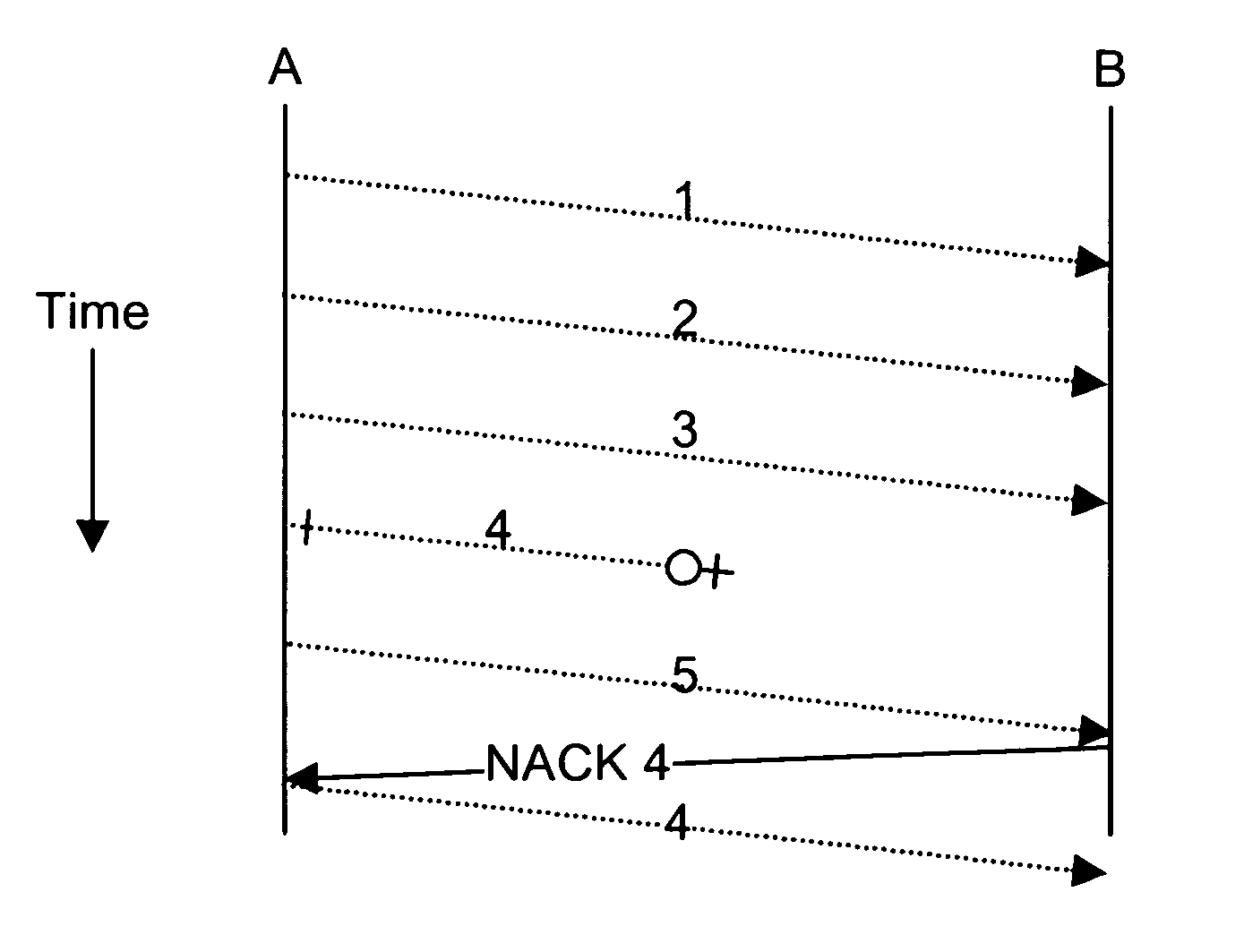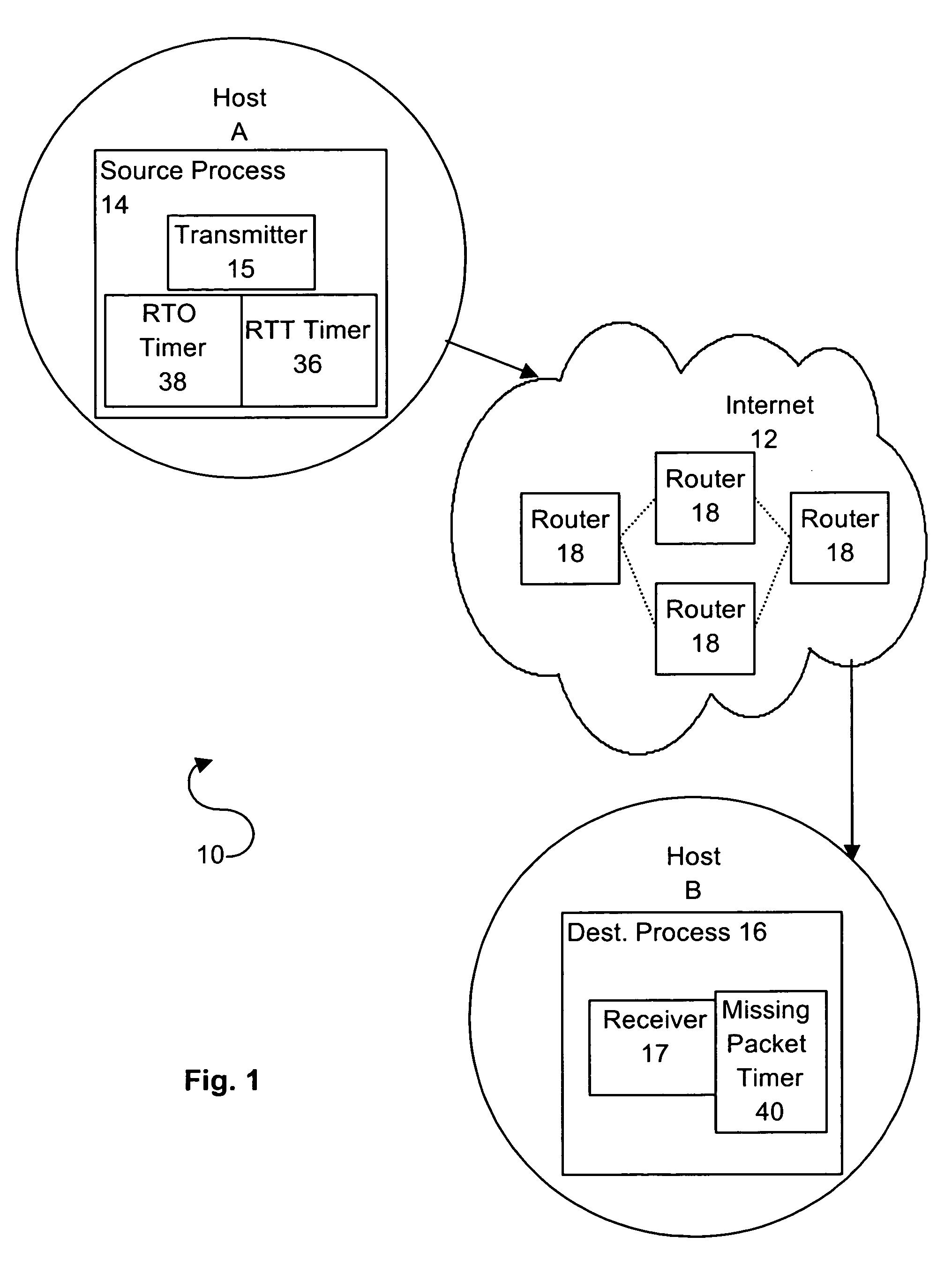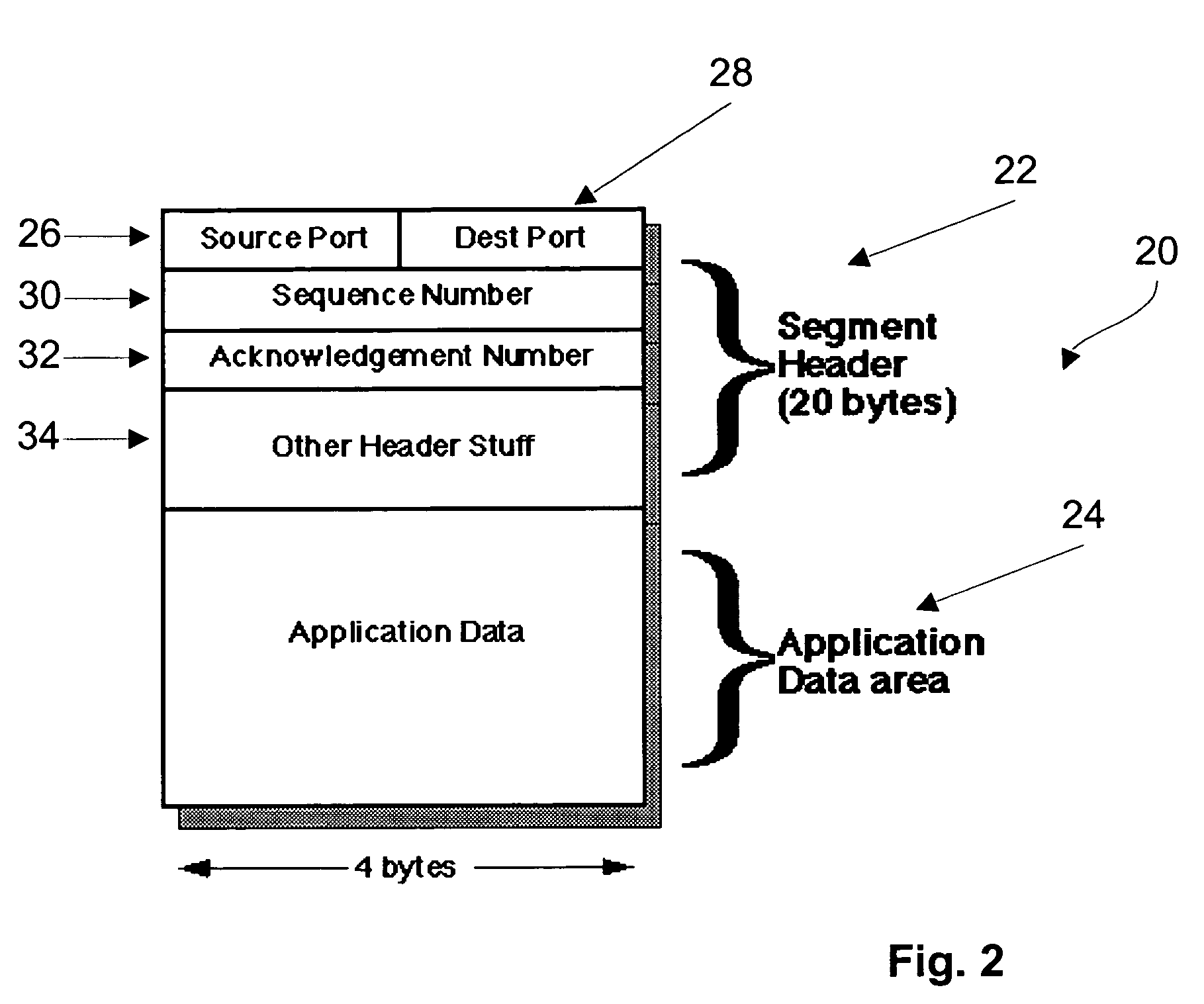System and method for a negative acknowledgement-based transmission control protocol
a transmission control and acknowledgement technology, applied in the field of digital communication methods and systems, can solve the problems of reducing the transmission rate, congestion window, and consuming significant resources in terms of load network devices, and achieve the effect of reducing the length of congestion window and increasing congestion window
- Summary
- Abstract
- Description
- Claims
- Application Information
AI Technical Summary
Benefits of technology
Problems solved by technology
Method used
Image
Examples
Embodiment Construction
[0029]A typical network communication system, generally designated at 10, is shown in FIG. 1. In the example depicted, system 10 consists of a first host A and a second host B connected through a network 12, such as the Internet. Hosts A and B are generally located at different locations, and are running separate application programs, referred to herein as source and destination process 14, 16. Source and destination processes 14, 16 are associated with source and destination transmission control protocol (TCP) layers which permit the transmission of digital data, and which are referred to in this description as transmitter 15 and receiver 17, respectively. As is well known, system 10 will typically have multiple hosts connected to the Internet 12 at any one time. To communicate and share information, hosts A and B pass messages, in the form of a digital byte stream, through network 12. To ensure that the messages are correctly and efficiently routed from host A to host B, and their...
PUM
 Login to View More
Login to View More Abstract
Description
Claims
Application Information
 Login to View More
Login to View More - R&D
- Intellectual Property
- Life Sciences
- Materials
- Tech Scout
- Unparalleled Data Quality
- Higher Quality Content
- 60% Fewer Hallucinations
Browse by: Latest US Patents, China's latest patents, Technical Efficacy Thesaurus, Application Domain, Technology Topic, Popular Technical Reports.
© 2025 PatSnap. All rights reserved.Legal|Privacy policy|Modern Slavery Act Transparency Statement|Sitemap|About US| Contact US: help@patsnap.com



